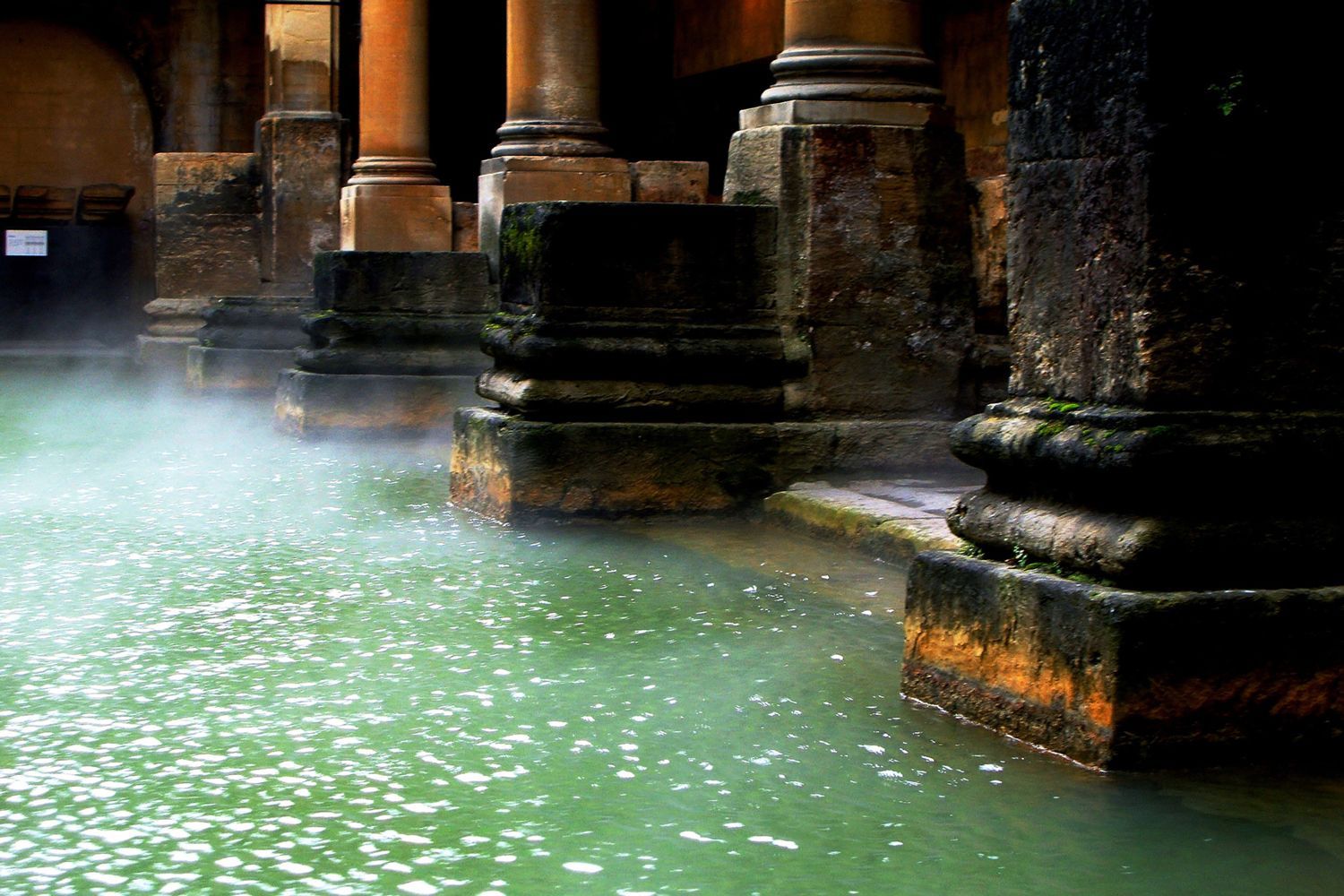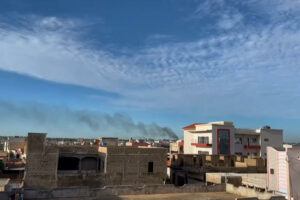The Hammam Essalihine in Algeria are Roman baths still used daily by the locals just as they have been for thousands of years.
The Romans were some of the most famous engineers of the ancient world. While they never built anything quite as spectacular and absurdly big as the Great Pyramid of Giza and its impressive interiors, much of the monumental architecture they built remains today. Some of their bridges (like Puente Romano in the Spanish city of Merida) remain in use. Many of their theaters and amphitheaters still stand and are used for modern concerts and events (like the Roman theater at Carthage in Tunisia).
Wherever the Romans went, they built theaters and baths. Public cleanliness and recreation were of the utmost importance to the Roman way of life. Perhaps the most famous surviving Roman baths today are in the English town of Bath (a day trip from London). But there are other Roman baths still in use without the much later Gregorian architecture that characterizes Bath, England. One example is the Hammam Essalihine in Algeria.

The Living Roman Baths Of Aquae Flavianae / Hammam Essalihine
When travelers go to ancient Roman ruins, the atmosphere is typically quiet and contemplative. But the old Roman baths of Aquae Flavianae (today called Hammam Essalihine) in Algeria tell a different story. They are full of noise, life, and laughter as people continue to enjoy the rejuvenating waters of the baths just as the Romans did 2,000 years ago.
- Built: During Flavian Dynasty – AD 69-96
In Roman times, the baths were called Aquae Flavianae. But today, they have an Arabic name, “Hammam Essalihine” (translates as “The Bath of the Righteous”). They are located in the Aures Mountains of the Khenchela Province of Algeria. As the old Latin name suggests, they originated during the time of the Flavian Dynasty. Ottoman brickwork and repairs are also visible at the site. The site is nestled in the green pines, oaks, and cedar forests of the Aures Mountains in northern Algeria. It is a great place to relax amid some of the most remarkable public works the Romans left behind.

Visiting & Bathing In The Roman Baths Of Hammam Essalihine Today
Those who do get to venture to the Roman baths of Hammam Essalihine will not find a crowd of tourists but a crowd of local people. The architecture of the site remains in a remarkable state of preservation, and entry is free. There is still hot water feeding into the two open-air baths.
The waters are known to be pure and extremely rich in minerals. The water temperature is around 70 °C (158 °F), and it is thought to help with rheumatic, dermatological, as well as respiratory diseases.
- Water Temperature: 70 °C (158 °F)
- Admission: Free
The baths remain a place to have a daily wash and hang out with friends. There are two pools there today. One is rectangular and is used for men, while the second pool is circular and used by women (remember that Algeria is a conservative nation). The pools are around eight meters in diameter and around 1.5 meters deep.

Like other spas, Hammam Essalhine offers massages, hydrotherapy seasons, and relaxation treatments by the local physiotherapists working there. The Roman pools are located just out of the modern city of Khenchela, and the roads are not the best to the historic site.
Visiting Algeria & The Roman Ruins Of North Africa
The Maghreb region of North Africa was an important region of the Roman Empire, and today, major Roman ruins (like a forgotten Colosseum in Tunisia) can be found throughout the area. The more impressive ruins are in modern-day Algeria and Tunisia (there are also ruins in Morocco, but that was getting peripheral to the Roman Empire).
- Visa Requirements: Visa Required For All Western Countries
Algeria is not a touristic country. Few countries have visa-free access to the country (Americans and other Western passport holders do not). There is very little tourist infrastructure in Algeria, and the country remains relatively closed, conservative, and skeptical of the outside world (partly due to the trauma of the brutal war of independence against France).

Making visiting Algeria more difficult is that not only are visas required in advance, but travelers also need to apply for the visa in their country of residence. So once travelers have started their journey, it is likely too late to get the visa.
The U.S. Department of State has a Level 2 “Exercise Increased Caution” travel advisory for Algeria. Those planning to go should check for current travel advice and read up on the country before going. E.g., the border with Morocco is closed (the two countries do not get along with each other), and the nation is socially conservative (so dress and act accordingly). That being said, Algerians are very warm and welcoming to the tourists who do take the time and effort to visit their country.
Source : The Travel

















Add Comment